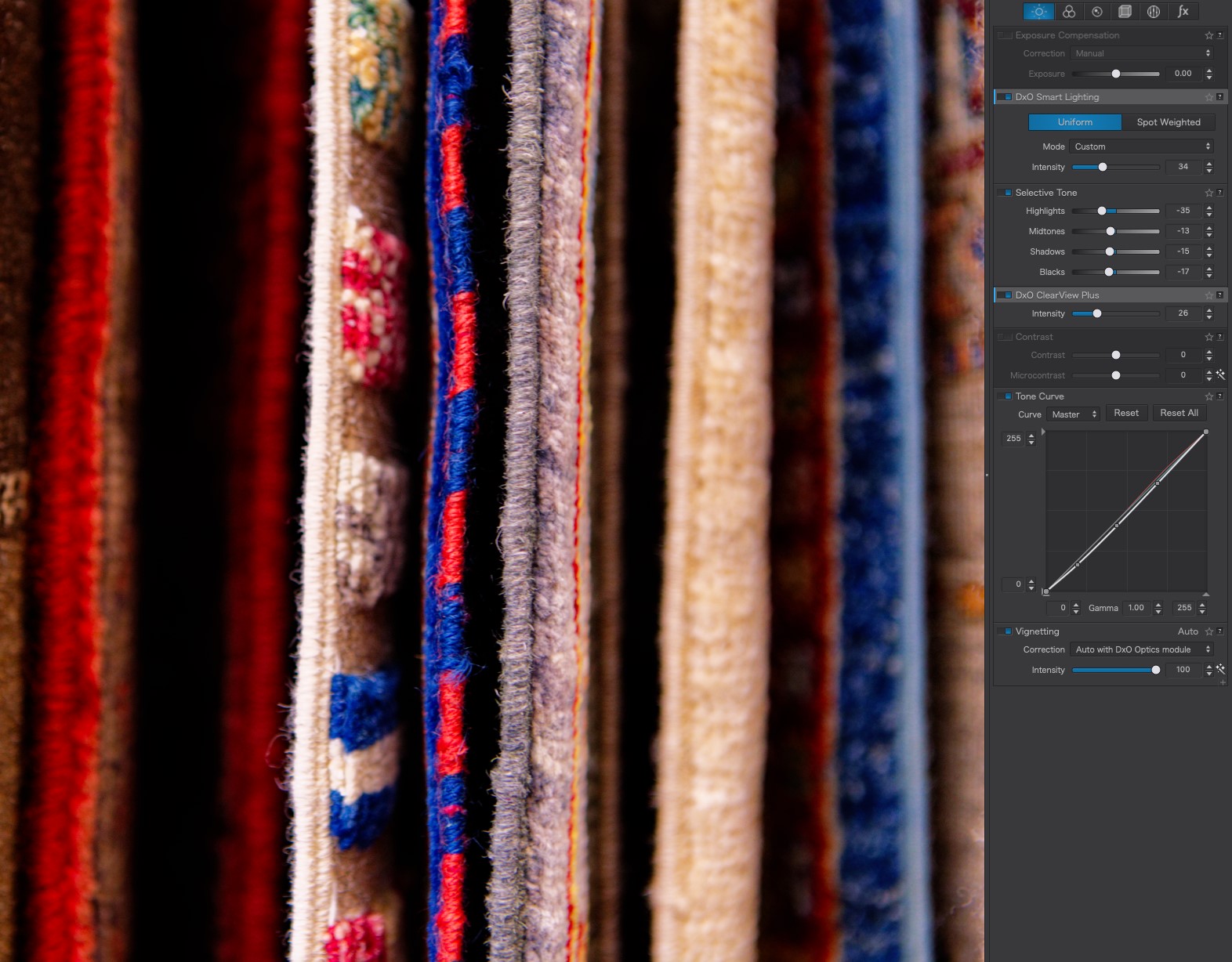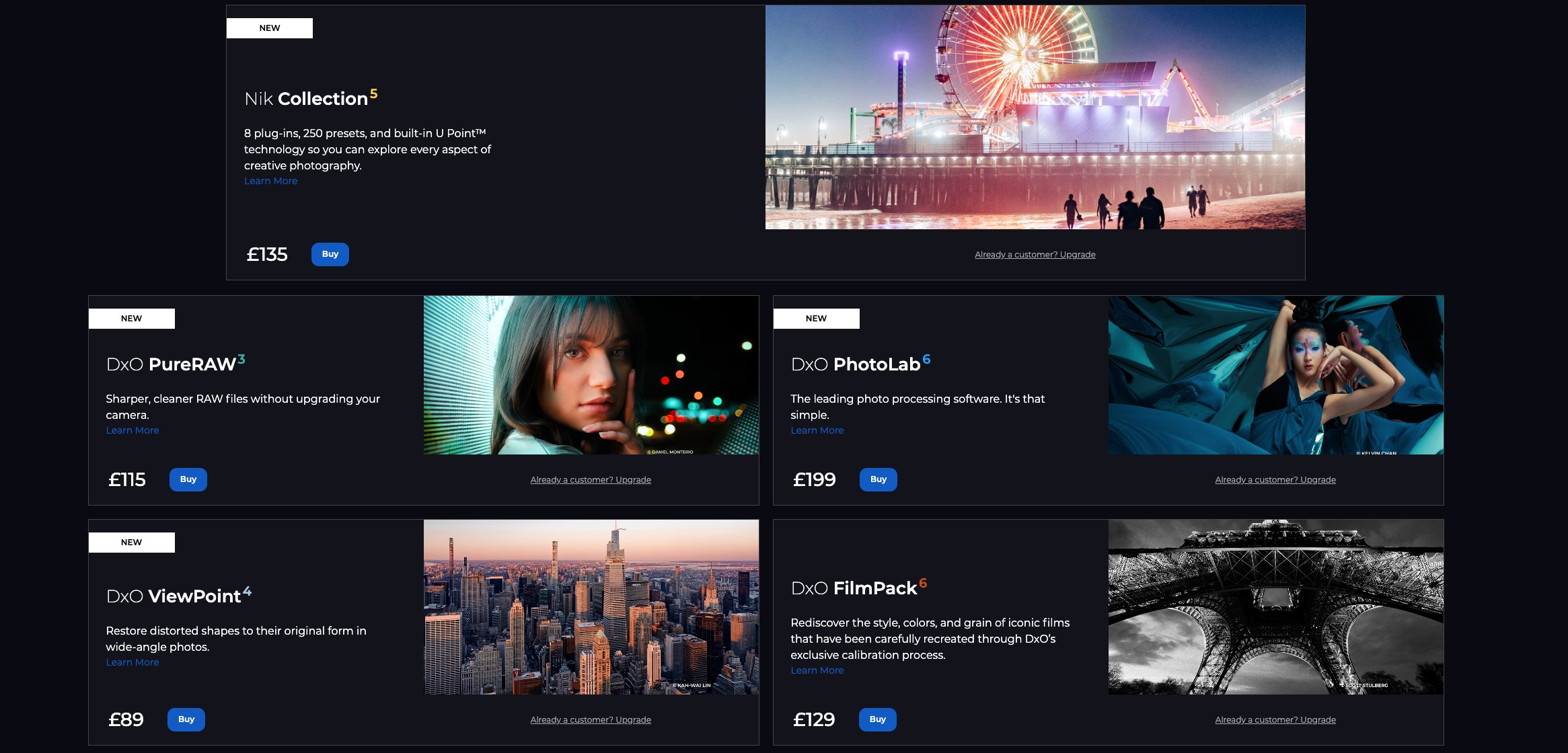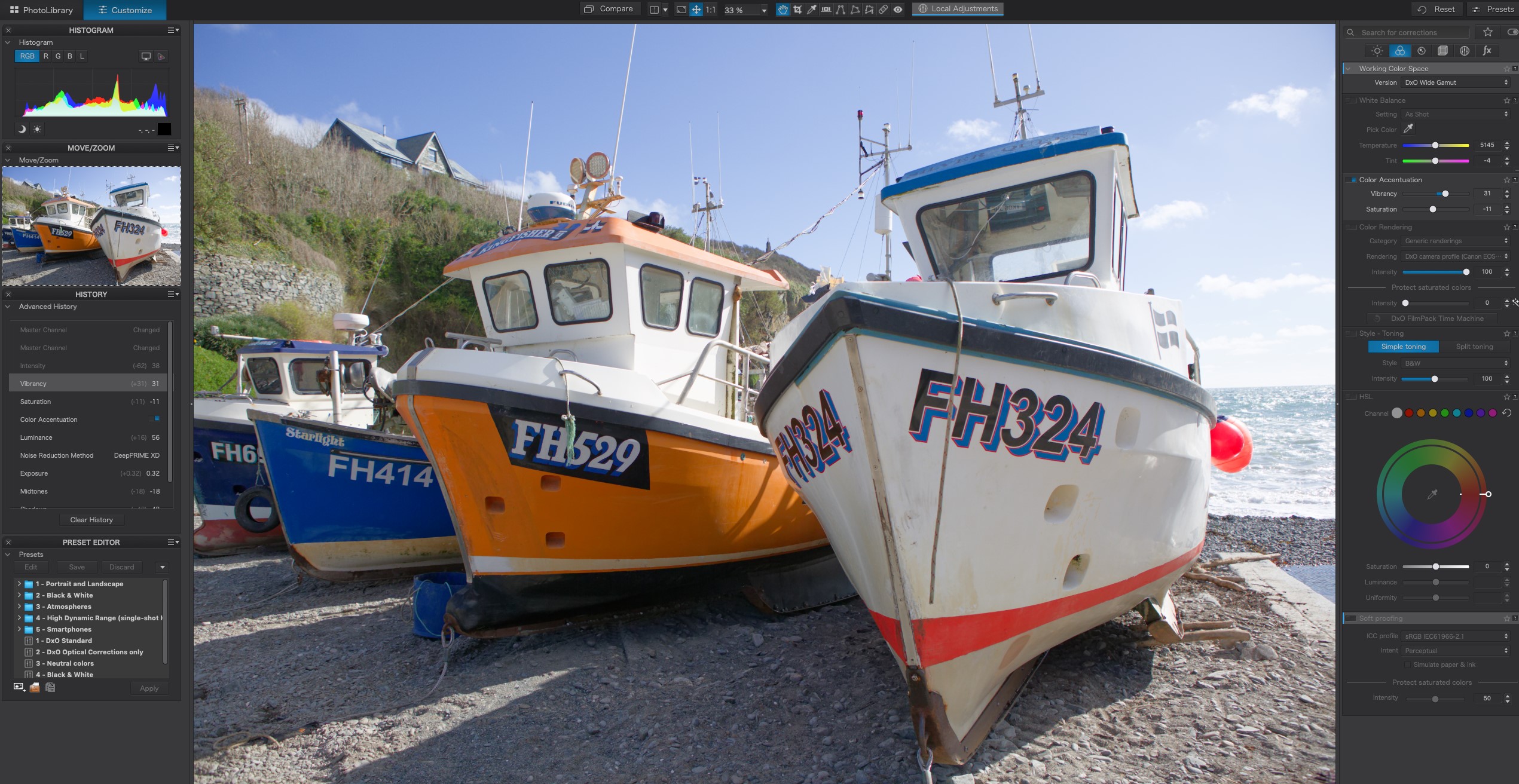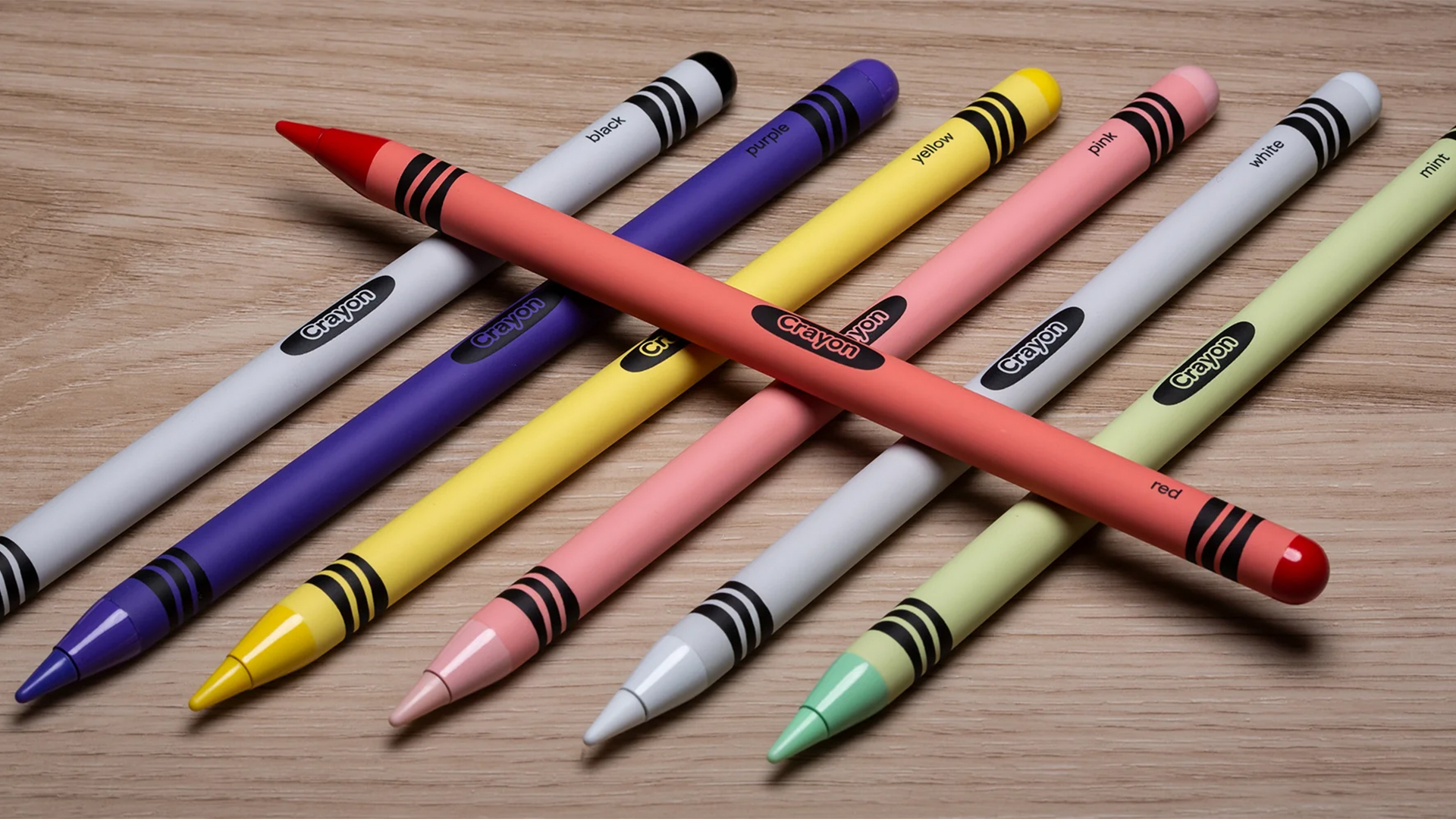Our Verdict
An excellent photo-editing and management tool in its own right, and a worthwhile contender to Adobe Lightroom. PhotoLab 6 actually surpasses Lightroom in many areas and provides an intuitive platform to use, while at the same time providing high-level RAW and denoising technologies that push the photographer to get the most out of their images.
For
- Intuitive interface
- Clean image processing
- Lots of editing options
- No subscription model
Against
- New XD denoise algorithm can sometimes go too far
- No tethering options
- Elite option has a high initial payment
Why you can trust Creative Bloq
Available languages: English, French, German, Japanese, Chinese (Simplified).
Microsoft Windows
Minimum system configuration:
Any CPU supporting SSE 4.1
8 GB RAM
4 GB available disk space
Microsoft® Windows® 10 version 20H2 (64-bit, and still supported by Microsoft®)
Recommended system configuration:
Intel® Core™ processor with 6 cores or better, or AMD Ryzen™
16 GB RAM
6 GB available disk space
NVIDIA RTX™ 2060, AMD Radeon™ RX 6600 or better with latest drivers
macOS
Minimum system configuration:
Any CPU
8 GB RAM
4 GB available disk space
macOS 11.6 (Big Sur)
Recommended system configuration:
Intel® Core™ Processor with 6 cores or better, or Apple Silicon
16 GB RAM
macOS 12.0 (Monterey), macOS 13.0 (Ventura)
6 GB available disk space
AMD Radeon™ Pro 580X or better for Intel® Macs
DxO, the maker of PhotoLab 6, is a French company with a true history of developing first-class software for the photography industry. They’ve been around since the early 2000s, and in 2004 Optics Pro was released, which offered high-level technology to correct lens defects and image distortion. More latterly, their RAW editing technology and denoising abilities have set a benchmark for amateur and professional photographers alike – with modules and plugins that can be used with or without Lightroom or their PhotoLab suite.
In this review, it is indeed this suite I'll be taking a closer look at – specifically their latest version released last year – PhotoLab 6. It offers a complete photo organisation and editing platform that can be twinned with, or more likely used as a replacement to more conventional options like Adobe’s Lightroom.

Design & user experience
Anyone familiar with the general model of Adobe projects will feel at home in DxO PhotoLab 6, with a comprehensive correction and development tab on the right of the screen twined with a large preview screen front and centre, and the more logistical elements of image processing on the left, including presets, history, file location and colour histograms. Much like Adobe’s offering it is skinned in black and grey tones, offering a ‘dark mode’ type feel to the software which is easy on the eye and draws out individual tones in any image you might be editing.
So far, so Lightroom, you might say, but there are some nice pieces of design I've seen in other programmes over the years that have made their way over the latest PhotoLab incarnation, including the ability to toggle on and off in a more obvious way specific pieces of image manipulation – clearly indicated by a switch button of each development section and a greyed out feature when a particular editing tool is not in use. It’s nicely and intuitively laid out, providing the photographer with clearly indicated icons for cropping, image manipulation, post-processing effects and spot corrections that can be made on the fly. I found it to be on par if not slightly easier to find my way around once I had a few hours under the skin of each tool.
When it comes to photo management, PhotoLab 6 doesn’t profess to offer the same catalogue and tagging systems as Adobe Lightroom and other applications, but what it does do is offer a non-destructive and easy-to-navigate way around your file directories, with a very easy-to-access and intuitive meta-tagging system that I actually preferred to other pieces of software out there, with clearly labelled areas to add contact information, content and status details.
The keyword list is also a powerful tool in the PhotoLibrary, which allows users to easily add powerful keywords to images to bring them up later, no matter where they’re placed within directories. You can then just type your keyword in the search box at the top and no matter where they’re placed on your computer, your images will appear. A nice touch and a great option for sorting out which images to use as final selects or for social media, for example.

Features
Feature-wise, one thing that is immediately apparent is the number of lenses and modes available within the lens correction module. Load up an image taken by a particular camera/lens pairing and PhotoLab 6 will automatically detect the combination, download a module to accurately amend and distort the image accordingly, with a lot of customisation available. DxO are keen to point out that this is based on real-world testing, so you can be confident of image manipulation related to the actual distortion and correction required rather than a digital interpretation.
Another highlight of PhotoLab 6 is an improvement to the technology that the programme is widely recognised for – denoising. The DeepPrime technology in previous incarnations of the software is already considered excellent, but DeepPrime XD is now introduced, offering a new, improved algorithm that provides the opportunity to create a sharper image with less noise at far higher sensitivities.
Despite the mathematical improvements behind the scenes, I must admit that I reverted a few times to the older system as the differences between the two systems are negligible. A sharper, crisper image is definitely possible in the XD version, but I found that it does run the risk of creating more glitches, artefacts and fake ‘details’ that have been interpolated automatically when the programme would have been best off leaving it alone. It’s one of the only criticisms I have with the overall feature set of the new software.
If you are using PhotoLab 6 as a straight replacement for Adobe’s tools and want to edit the content of your photos as well as their look and feel, then I'm pleased to say that there are vastly improved retouching and cloning tools in this latest version. Complex editing and cloning operations are easily possible within PhotoLab 6, and I'd go as far as to say that it feels easier, more intuitive and more advanced than Lightroom’s in many areas. You can brush over a piece of your image, much like any other photo editing tool, but you can also mirror, flip and rescale the source of your brush, meaning it’s a lot easier to find the right piece of your image to fill areas of repetitive pattern.
Tools & add-ons
There is a large selection of tools with PhotoLab6, many as add-ons or separate programmes, that offer even more control for photographers over their images.
PureRaw 3 is a programme and module that integrates seamlessly into Lightroom or PhotoLab workflows, allowing users to take even more control over noise and sharpness in RAW images before they’re graded. The lens correction options here are also exemplary, and although it’s an additional cost I'm yet to find a better RAW processing module than this.
There is also ViewPoint4, which offers complete distortion control over images, working on geometry and lens correction to a higher standard than the default PhotoLab. Again, this offers powerful options and I think this might be a worthwhile addition, especially for architectural photographers.
There’s also a dedicated FilmPack app, offering a number of excellent filters without the need to download extra presets, and the NikCollection, which is again a preset collection that allows the photographer far greater control over a range of image controls. I think the latter would be a good companion to PureRaw 3.

Price
Unlike Adobe, DxO sells its software outright. This means you're not bound into a subscription deal to use the software, but the initial outlay is going to be bigger. There is a £199 one-off fee for PhotoLab6, £115 one-off fee for PureRaw3, and an £89 one-off fee for ViewPoint4. If you need all three, that sets you back just over £400, but if you need to use it all regularly, this becomes cheaper than two years of Adobe's Photography Plan before discounts, for example.
Should I buy PhotoLab 6?
If you’re a Lightroom user and you’re curious as to what’s out there when it comes to powerful editing tools, look no further than PhotoLab 6. I was very impressed with its intuitive layout and operation, a competent set of features and powerful image editing which often I thought provided better outputs than Lightroom in many situations. It’s nice to not have recurring payments, even though users will initially have to reach deeper into their pockets, and I also highly recommend users opt to pay the extra money for the ELITE edition – it’s worth it over the ESSENTIALS version, which offers fewer improvements over previous versions of the program. Overall, highly recommended.

Thank you for reading 5 articles this month* Join now for unlimited access
Enjoy your first month for just £1 / $1 / €1
*Read 5 free articles per month without a subscription

Join now for unlimited access
Try first month for just £1 / $1 / €1
out of 10
An excellent photo-editing and management tool in its own right, and a worthwhile contender to Adobe Lightroom. PhotoLab 6 actually surpasses Lightroom in many areas and provides an intuitive platform to use, while at the same time providing high-level RAW and denoising technologies that push the photographer to get the most out of their images.

Jacob Little is a freelance writer and photographer and over the past ten years, has written for several national publications and brands. Based near Bristol, technology and the creative industries form the basis of his work, and he also provides content planning and project scoping services for agencies and businesses.

